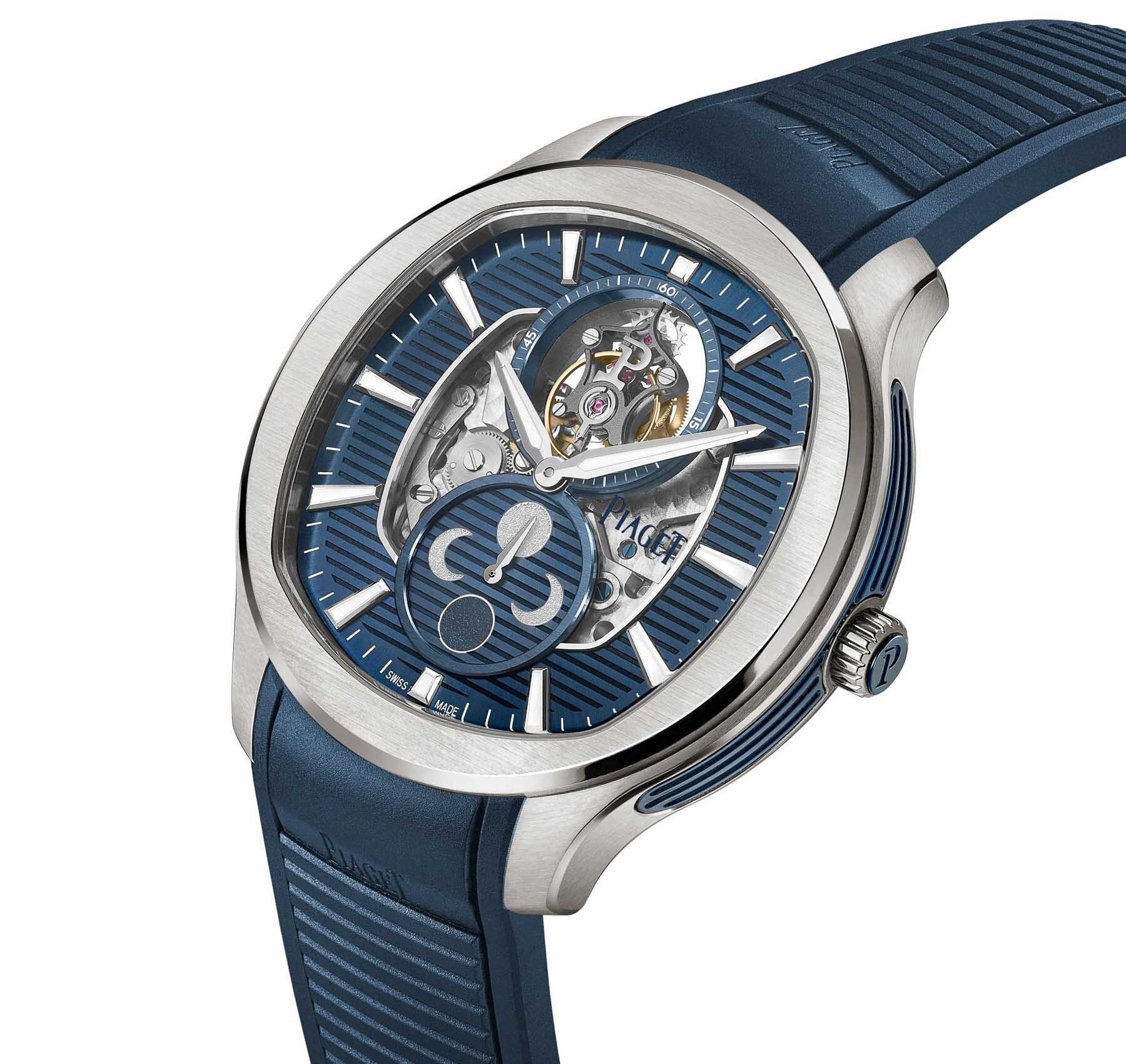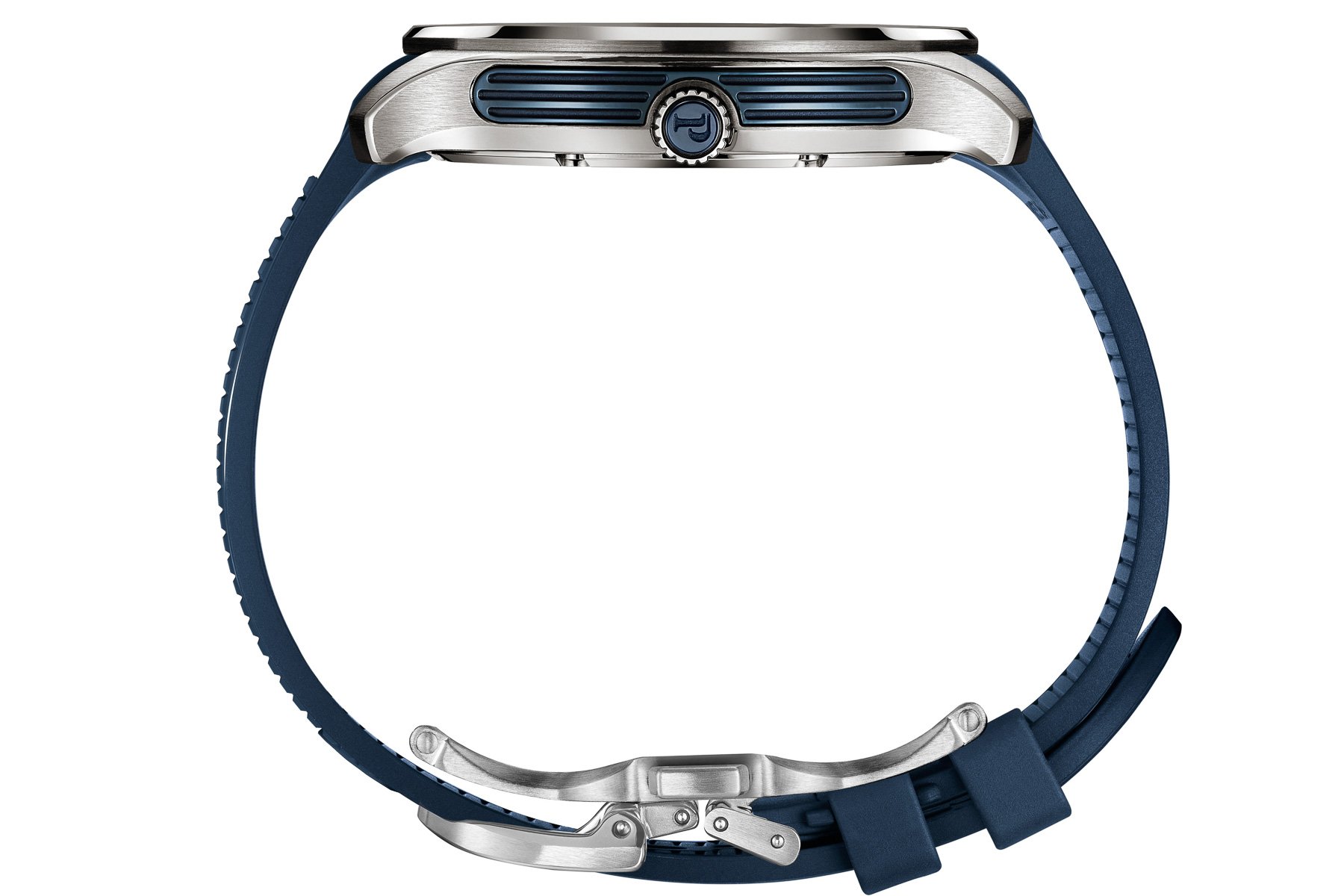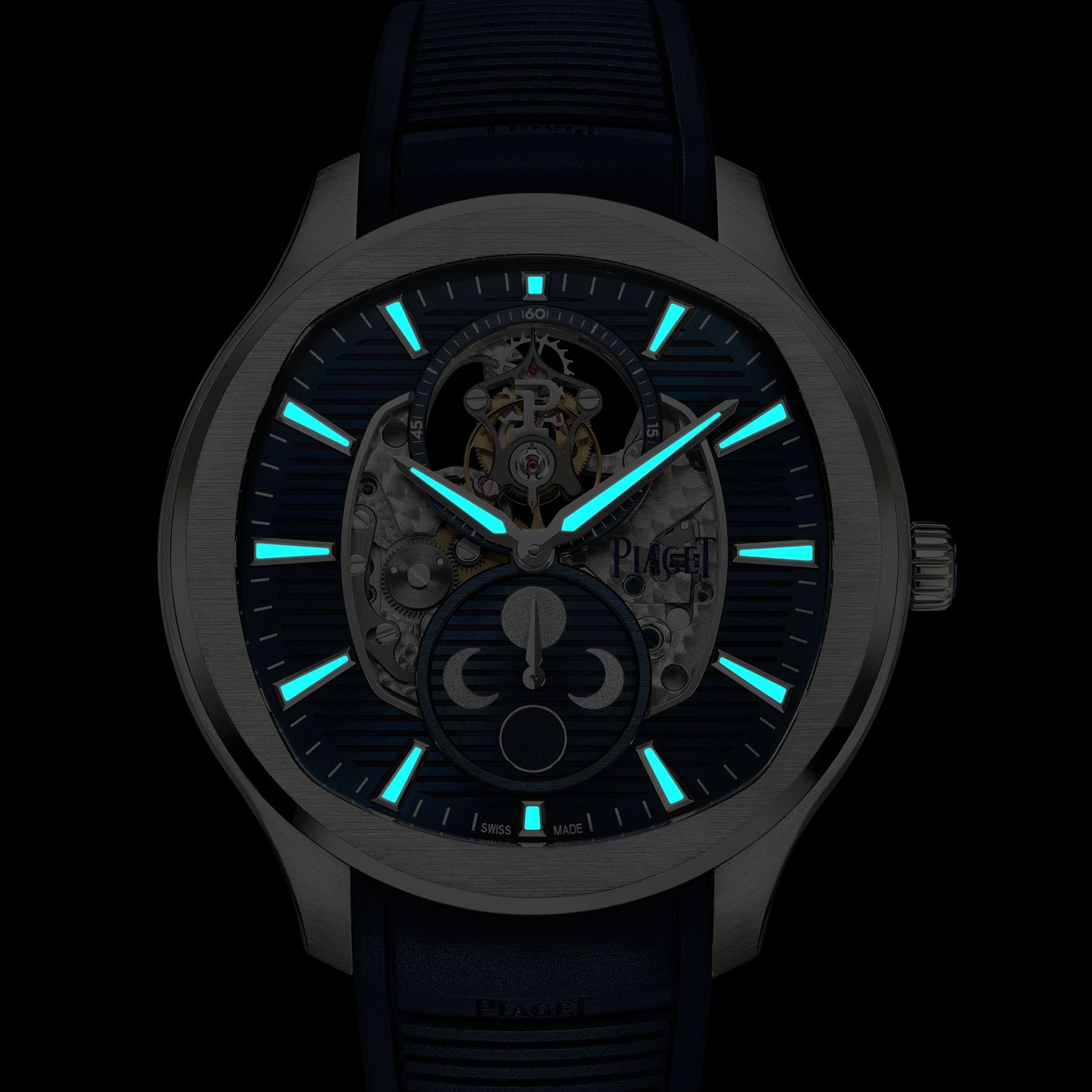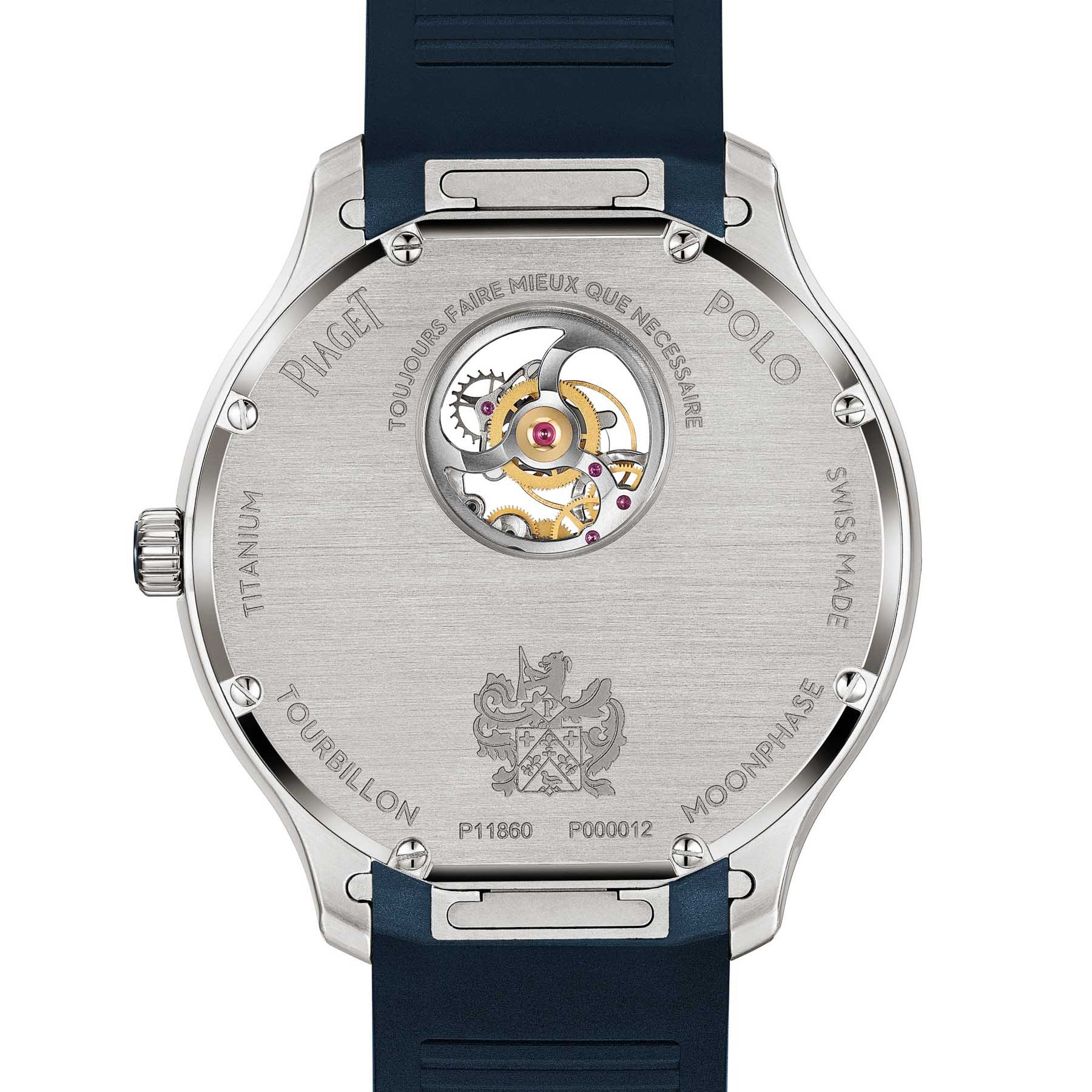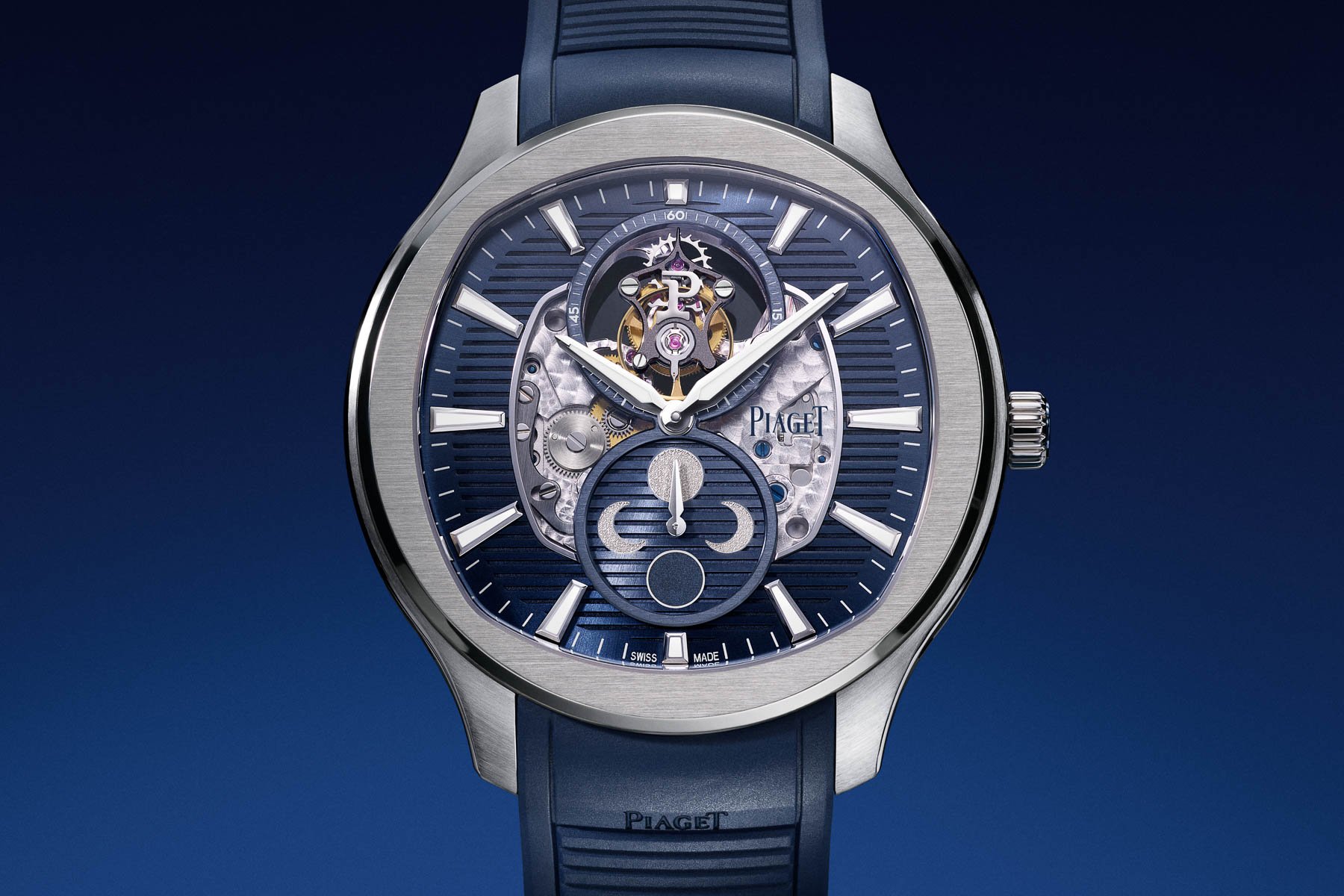Introducing: The Piaget Polo Flying Tourbillon Moonphase
We’re just barely a month into 2025, and Piaget is already rolling out the big guns. The new Polo Flying Tourbillon Moonphase is a modern, sporty piece with movement typically reserved for a dress watch. Because of its exotic nature, this release won’t be for everyone, but it’s always fun to have a look!
The current Piaget Polo debuted in 2016, and while it only shows traces of the 1979 original, which also has a lined dial motif, the lineup has aged well. Over nearly a decade, Piaget has added numerous material and complication options. Now a new Polo Flying Tourbillon Moonphase is joining the collection and using one of the brand’s most prestigious movements.
The Piaget Polo Flying Tourbillon Moonphase
As we’ll discover, the latest Polo uses a highly complicated caliber that doesn’t sit inside a stodgy dress watch made of precious metal. The Flying Tourbillon Moonphase comes solely in titanium. The 44mm case may sound large, but the current Polo line is known for wearing small due to short lugs. In this example, the case should fit beautifully due to an impressive 9.8mm thickness.
Enhancing the Polo Flying Tourbillon’s design are blue PVD-coated titanium inserts on the case sides. These inserts contain strakes with rounded edges — or “gadroons” — that recall details from the 1979 original. Further emphasizing the watch’s sporty appearance is a blue rubber strap with a titanium push-button folding clasp. It’s the best choice to exploit the stated 10 ATM water resistance rating. If a dressier look is more appropriate, the owner can easily switch this strap to an included blue alligator ensemble. As an aside, I’d love to see an optional titanium bracelet.
A composed open-worked dial
Open-worked dials aren’t always my cup of tea, but the Polo Flying Tourbillon reveals enough internals while maintaining a cohesive execution. The dial’s outer portion contains blue gadroons and applied Super-LumiNova-filled indexes. These hour markers match polished central hands with the same luminous material. A circular sub-dial on the lower part of the display repeats the gadroons and contains the moonphase indicator with a small corresponding pointer. The flying tourbillon, with its visible titanium carriage, sits within a circular oculus on the upper portion of the dial and doubles as a running seconds indicator. Finally, the underlying central portion is open for viewing the movement.
The 642P powers the Polo Flying Tourbillon
Interestingly, the case back only shows the tourbillon mechanism of the in-house 642P caliber. Perhaps Piaget wanted to limit the amount of wrist visible through the front of the watch. The movement sounds relatively basic when specs such as 40 hours of power reserve, 23 jewels, and a frequency of 21,600vph are mentioned. However, this isn’t a fair summary. Consider that the 642P is only 4mm thick and can run for 122 years until a full day’s gap exists between the moonphase display and the night sky. It’s impressive and currently used in a handful of references.
Exclusive and likely elusive
The Polo Flying Tourbillon Moonphase is so exclusive that Piaget does not publish its price. Although the watch will owned by very few, I find it overwhelmingly endearing. Normally, watches like this start to run together. Complicated dials, overwrought movement decorations, and a case that’s more at home at all the non-existent black-tie affairs that few attend are the norm. This watch, however, wins based on its simplicity and symmetry. The fact that it can be worn daily makes it even more desirable. After all, if one is going to spend a large amount on a watch, why not be able to use it all the time?
This is a partnership post. Read about our transparency here.

